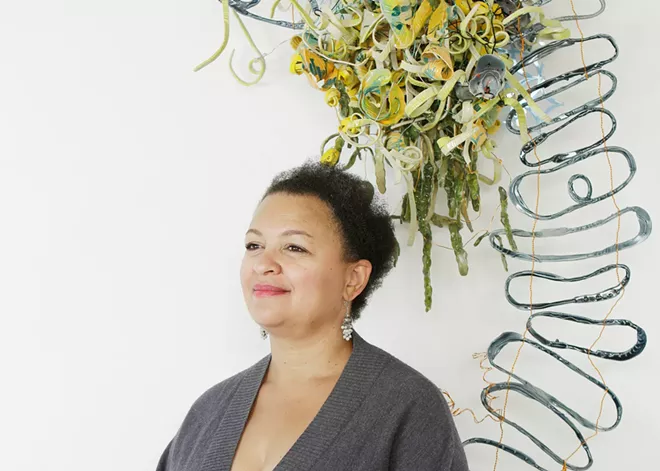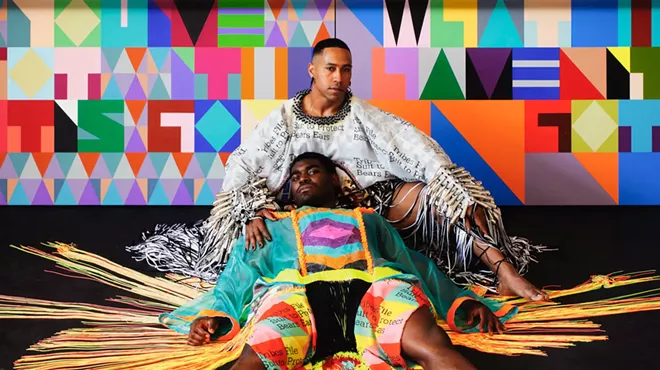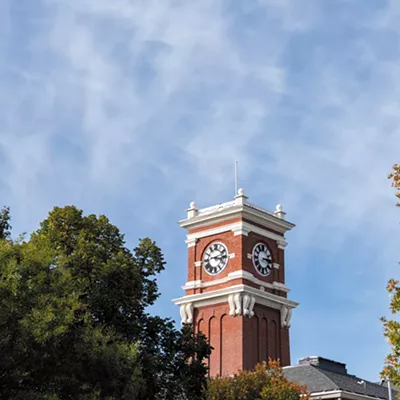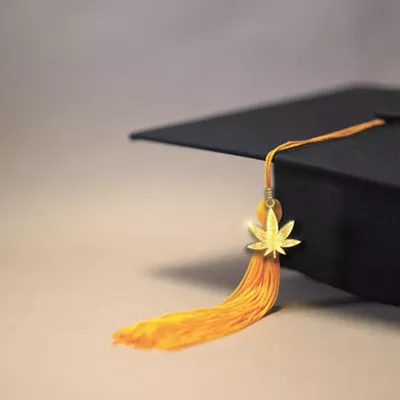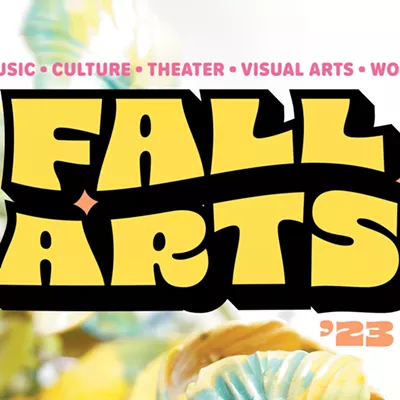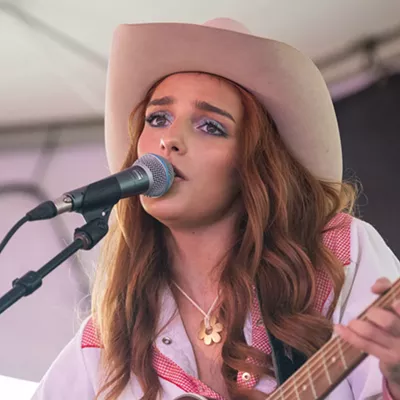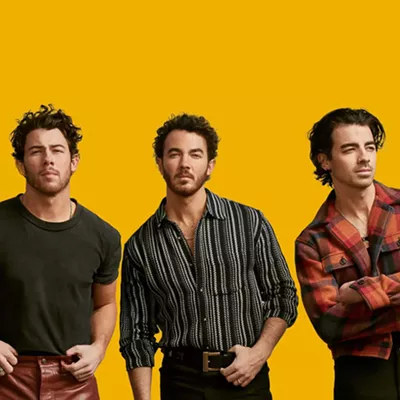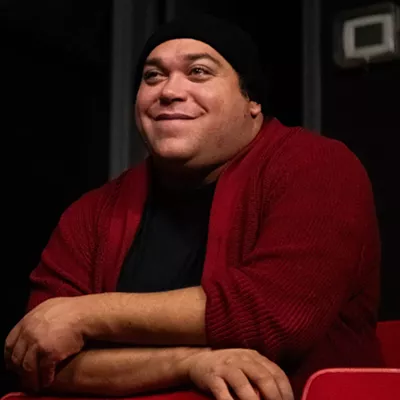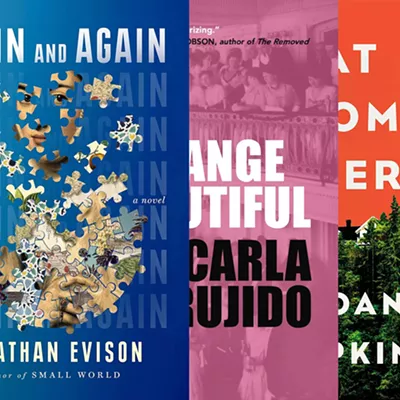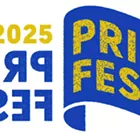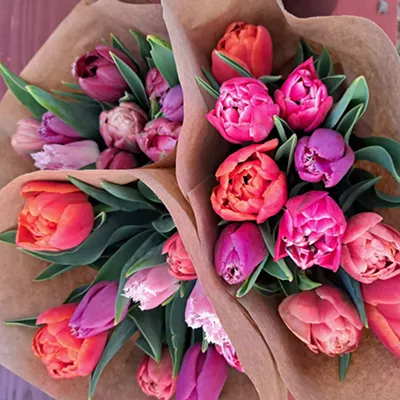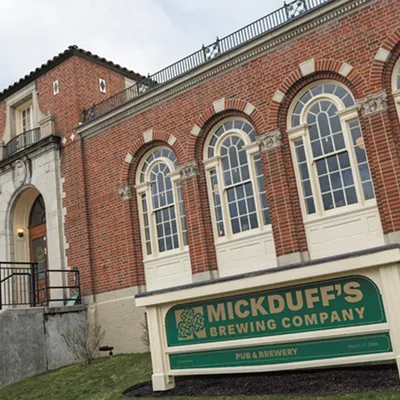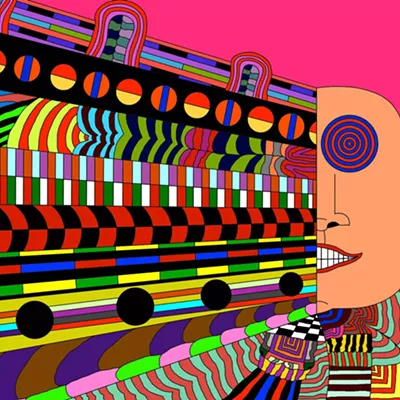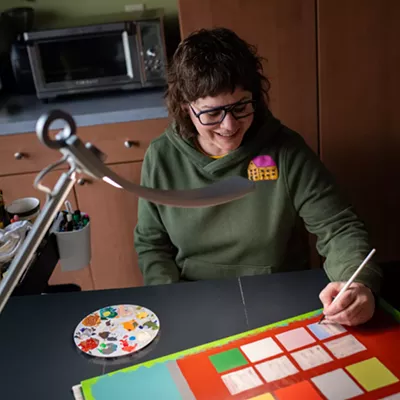When artist Io Palmer was an undergraduate art student, what resonated most was that art can and should be about something. She remembers an instructor nudging her to think about the ideas she wanted to put into the world through her art.
"That was always really super interesting to me, and that's where I remain," says Palmer, a Washington State University professor who now inspires her students to ask similar questions. "I remain at that place where the work, regardless of what it looks like, it's always about something."
Palmer's current exhibition with retired WSU faculty member Ann Christenson at downtown Spokane's Kolva-Sullivan Gallery, for example, explores numerous concepts simultaneously, from floral arrangements, window boxes and interior design to "borders and boundaries and fences."
"But it's not about the flower box," Palmer says, "it's about what that represents ... how some people are included in something [while] others are pushed out of something, are kept in a certain space, and my work has always been about acknowledging racial constructs, class constructs."
Even though Palmer's ceramic constructions in the exhibition titled "Entangle" (on display through Sept. 30 and open by appointment) deal with ugly issues, they are visually captivating, even joyous. That's intentional, she says.
"I sort of start to get tired of always thinking about myself and other people of color in relation to white America," Palmer says. "I started really kind of realizing that it sort of puts people as 'the other,' and I wanted to concentrate on creating a literal space that is about the richness, that is about the tapestry, that is about the beauty, that is about the struggles of our communities that have been historically dismissed."
Growing up with parents of different racial backgrounds gave Palmer a front-row seat to that struggle.
"It's the '60s in America," says Palmer, describing how her parents came to be in Hydra, Greece, where Palmer (her first name, Io, is pronounced 'ee-o') was born. "As you can imagine, a white woman [and] Black man wasn't seen as the wonderful thing that it is," she continues.
When the interracial couple weren't allowed to rent an apartment, they first went to Paris, then Greece, says Palmer. Her mother was into batik and printmaking, while her father was a sculptor.
When Palmer was 7 years old, her parents returned to America, where she lived with her mother through high school, then in Washington, D.C., to live with her father and nurture dreams of going to the School of Visual Arts in New York City where she hoped to study under multidisciplinary artist Hannah Wilke.
Other inspirations include painters Julie Mehretu and Mark Bradford, as well as performance artist Nick Cave, says Palmer, who ended up at Temple University's Tyler School of Art and Architecture.
Although Palmer initially studied painting in college, the medium didn't resonate with her as much as ceramics did.
"I still have this image of one of the students making this simple jar, and he had put a top on it," Palmer recalls. "I remember he pulled the top off and put it back on, and I just thought that was the most magical thing ever."
After graduation, Palmer traveled cross-country and was smitten with the southwest, eventually earning her master's in fine arts in ceramics and mixed media from the University of Arizona.
Palmer recently returned to the Southwest to complete one of many competitive artist residencies she's applied for and been granted throughout her nearly 25 years as a working artist and educator.
ENTANGLE: IO PALMER AND ANN CHRISTENSON
Open by appt. through Sept. 30, free
Kolva-Sullivan Gallery, 115 S. Adams St.
Contact Jim Kolva for viewings, 509-458-5517
"The main thing about a residency is having uninterrupted time to focus on making work," says Palmer, adding that artist residencies vary greatly.
Sometimes, she says, the artist pays for the experience, but other times it's free or nearly so, covering such things as supplies or studio space or even living space.
Palmer is keen on addressing the economic realities of working as an artist, which inspired her a few years ago to create something she called Concept Clay.
"My vision was to create murals in different places throughout Washington state, so I was trying to become more of a 'public artist' and include students in that artist-led mural work," Palmer says. "It was also kind of an umbrella for connecting with other ceramicists."
In addition to teaching — she's in her 10th year at WSU — Palmer has several large projects in the works, including an installation through 2024 at the Seattle Center. Titled "Medicinal: A Public Art Offering," the project relates to a recently installed mural Palmer and her students created for the Elson S. Floyd College of Medicine at WSU Health Sciences building in Spokane.
Palmer also continues to reflect on the work she makes and its relationship to the world at large.
"I can't reconcile just doing work that goes out to a show, that comes back and sits in my basement for 30 years," she says. "That's just me, but it's something that I've been struggling with lately, but it's a good struggle. I appreciate the struggle." ♦

